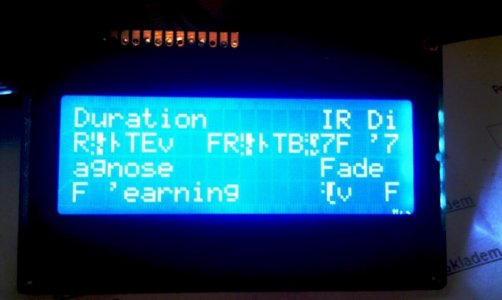After some time I have finally solved -5V issue, inproperly solded 10uF capacitor on pins 2 and 4, even everything looked OK.
I was trying to setup remote, I connected TSOP4838 to digital 6 on master and used NEC TV on my Logitech Harmony one, but nothing happens. Any clue what could be wrong? What remote are you guys using?
I was trying to setup remote, I connected TSOP4838 to digital 6 on master and used NEC TV on my Logitech Harmony one, but nothing happens. Any clue what could be wrong? What remote are you guys using?

